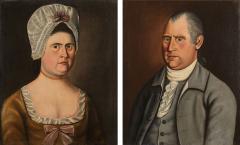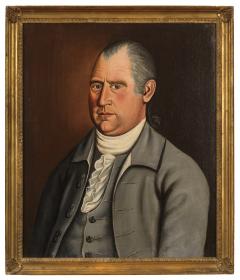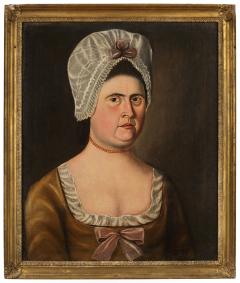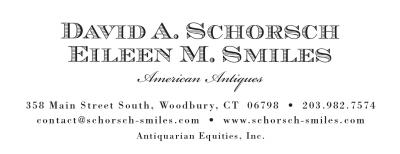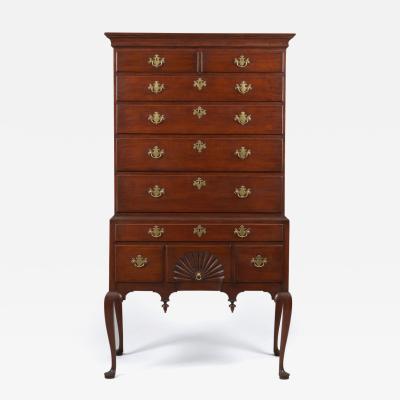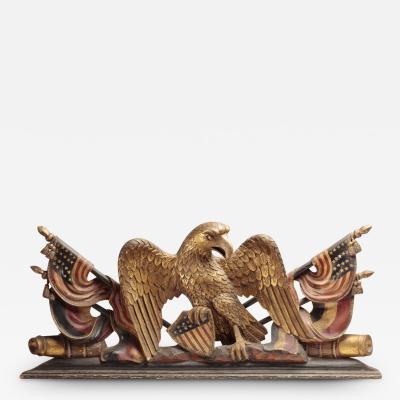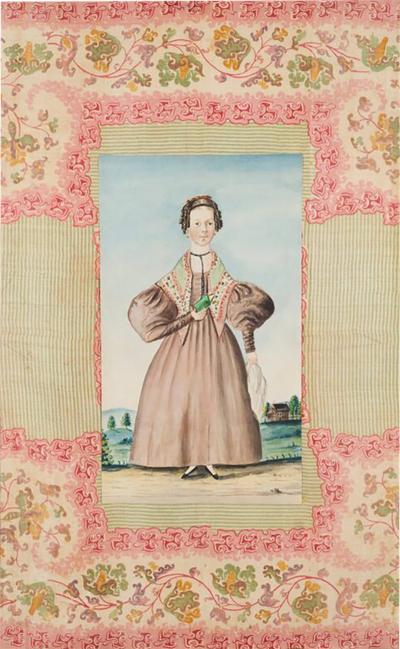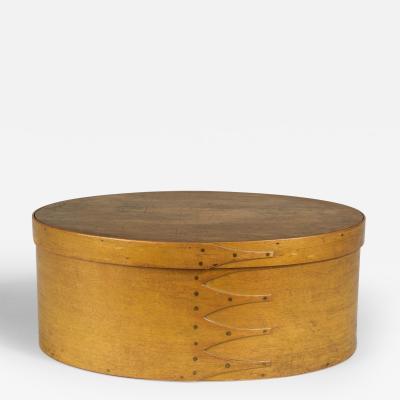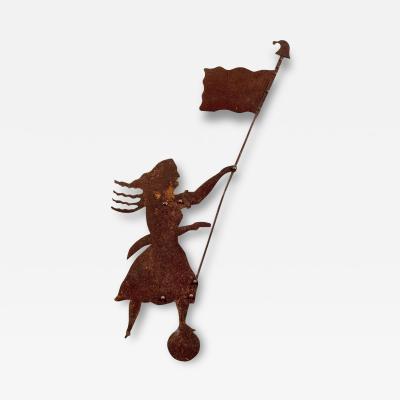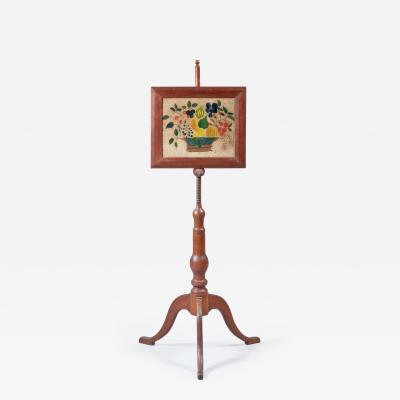Deacon Jonathan Richards and Sara Avery Richards
-
Description
Deacon Jonathan Richards and Sara Avery Richards
Dedham, Massachusetts, circa 1800–1810
Each, oil on canvas, 26 ½ x 21 ¾ inches, in original gilt frames
Incorporated in 1636, the town of Dedham was one of the first two inland settlements formed by the Massachusetts Bay Company. Located ten miles outside of Boston, adjacent to the Charles River and turnpikes to Hartford and Providence, Dedham became the seat of Norfolk County in 1793, making it a center for government and transportation. Jonathan Richards was born in Dedham on August 17, 1760, and died there July 21, 1837. Two years after the death of his first wife, Richards was married to Sarah Avery (1768–1830), on January 4, 1791. During the American Revolution, Richards served as a captain of the Militia of the Commonwealth of Massachusetts. His commission as signed by Massachusetts Governor Samuel Adams, and his honorable discharge in 1796 are preserved in the collection of the Dedham Museum & Archive. In these powerful and boldly painted portraits of circa 1800–1810, Jonathan and Sarah Richards are depicted wearing an older style of clothing that likely reflect the unpretentiousness and conservatism appropriate to a church deacon and his wife. Simply composed, in a muted palette, with penetrating eyes and features heavily accented with shadows, these may share common authorship with portraits of Silas and Abigail (Coggeshall) Casey of North Kingston, Rhode Island in the collection of Historic New England, illustrated in Nina Fletcher Little, Paintings by new England Provincial Artists 1775-1800 (Boston: Museum of Fine Arts, 1976), pp. 24-27, nos. 2-3.
Jonathan Richards was a key figure in a major event in Massachusetts church history that came to be known as the Dedham Decision, a landmark case in the separation of church and state that resulted in the expansion of the Unitarian Church. Richards was a deacon of the First Church & Parish in Dedham, established in 1638. Among the church’s founders was his Edward Richards ancestor (circa 1610-1684). A schism was sparked by the proposed hiring of Alvin Lamson (1792–1864), a minister from Boston who believed in Unitarian doctrine. The more conservative members of the congregation considered Lamson too liberal, but the parish approved of his hiring, while the judgement of outside ecclesiastical councils were inconclusive. Civility ended as tensions escalated, and the conservative faction split off from the church and circulated a pamphlet denouncing Lamson’s appointment. Richards was one of the three deacons at the time and though he originally voted for Lamson, he changed his mind and resigned on March 15, 1818, stating, “the reasons of my resolution it is unnecessary to mention.” He joined the group of conservative parishioners and hired Ebenezer Burgess (1790–1870) as minister of their dissident congregation. In the incident at the heart of the conflict, the church silver and other valuables were seized and hidden by one of the conservative deacons, who claimed they rightly belonged to his congregation.
A lawsuit ensued over the stolen church silver, which church could claim to be the First Church and therefore hold church property, and who had the ultimate authority over the hiring of new ministers. At that time the church and community were conjoined with the Congregational Church, the established church of Massachusetts that all town residents had to pay to support. Therefore, the state owned the stolen church property. At stake was the property of every church in Massachusetts whose membership was theologically divided. The case of began in February 1820 and was settled in 1821 by the Massachusetts Supreme Judicial Court’s “Dedham Division,” which ruled in favor of the liberal faction and declared that the church and the minister worked for the benefit of the parish and the property rightly belonged to the parish. The new application of the law completely overturned the uniform practice of Massachusetts Congregational churches and served as a major case in the separation of church and state, resulting in the Commonwealth of Massachusetts formally disestablishing the Congregational Church in 1833. Within twenty years, one-quarter of the five hundred and forty-four Congregational churches in Massachusetts were Unitarian. Rev. Ebenezer Burgess, to whom Richards later sold his home, was ordained as the minister at the new orthodox First Church of Dedham (now Allin Congregational Church) on March 14, 1821, which was formally recognized by the “Act of Incorporation for the New Meeting House in the first parish in Dedham” by the Commonwealth of Massachusetts on February 11, 1822.
Together with:
Attributed to Daniel Bingham (1803–1849)
A Front View of Deacon Jonathan Richards’s House in Dedham, Massachusetts
Dedham, Massachusetts, circa 1820
Watercolor and ink on paper, 16 ½ x 23 inches, in a period walnut frame
Inscribed lower margin: “A front view of DEA JONATHAN RICHARDS’S house in Dedham.”
During the eighteenth and early nineteenth centuries, the Richards family estate was known as Broad Oak. It had descended through five generations of the family, passing to Jonathan Richards in 1799. It was located along a bend of the Charles River on land that was originally the homestead of Edward Richards who had arrived in Dedham from England as one of the original settlers and a signer of the Dedham Covenant in 1636. With no heirs interested in the grand property, Jonathan Richards sold it to his friend, Rev. Ebenezer Burgess, around 1831. Soon after he purchased Broad Oak, Burgess razed the homestead and built a Greek Revival farmhouse that stands today as a private residence.
This is one of three recorded watercolor views of Jonathan Richards’s house attributed to Daniel Bingham, the only one in private hands known to us. The other two are owned by the Dedham Museum & Archive and Old Sturbridge Village, whose example was illustrated and discussed in Nina Fletcher Little, “Collector’s Choice,” The Magazine Antiques, October 1979, p. 484, pl. I, where Little based the attribution to Bingham on similarities in draftsmanship and detail in his only known signed work, a watercolor entitled an “East view of Dedham, 1817” in the Dedham Museum & Archive. -
More Information
Origin: United States Period: 19th Century Creation Date: 1800-1810 Styles / Movements: Folk Art, Americana, Traditional Incollect Reference #: 729345 -
Dimensions
W. 21.75 in; H. 26.5 in; W. 55.25 cm; H. 67.31 cm;
Message from Seller:
David A. Schorsch and Eileen M. Smiles are nationally recognized dealers in American antiques and folk art, specializing in weathervanes, folk paintings, Shaker furniture, and more. With over forty years of experience, they offer expert services in private and corporate collections, authentication, and auction representation—contact them today at 203.263.3131 or via email at contact@schorsch-smiles.com.
















